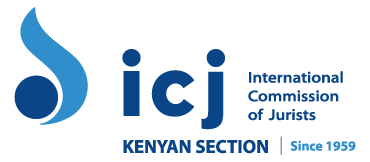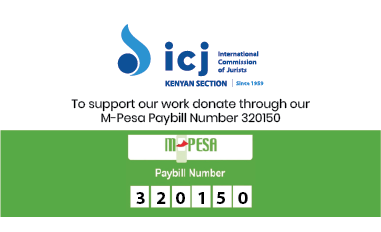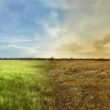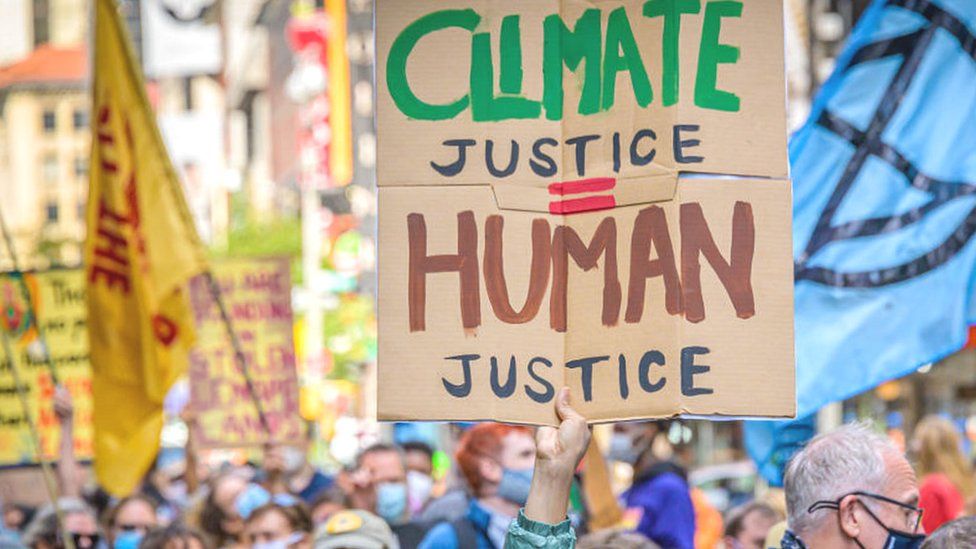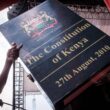NAIROBI,Kenya – Climate Justice highlights countries’ and communities’ unequal historical responsibility for the climate crisis. Notably, it’s as unfair as asking the designated driver to clean up the entire bar after a wild night out.
This concept calls for holding wealthier nations, industries, and individuals accountable, as they often contribute the most to emissions while enjoying insulation from the worst impacts.
This principle is rooted in the Common but Differentiated principle under Article 3 of the United Nations Framework Convention on Climate Change (UNFCCC).
Why is Climate Justice crucial?
Climate change isn’t just about the melting ice caps and rising temperatures; it’s a key human rights issue. It is a critical issue that poses a significant threat to the lives of people worldwide.
It is a well-established fact that every human being has the right to life, which is enshrined in Article 6 of the Universal Declaration of Human Rights (UDHR) and Article 26 of the Constitution of Kenya 2010.
Given that climate change directly affects the quality of people’s lives, it is essential to take urgent and effective action to combat this problem and ensure the protection of human rights.
Lives, livelihoods, and resources are at risk, with vulnerable populations being hit the hardest. Additionally, these communities cannot often adapt to and mitigate climate shocks. Therefore, the Kenyan government must step up to protect those most affected—especially those in extreme poverty and marginalised communities who lack adequate support.
Currently, farmers in Kenya are facing a serious challenge due to changing weather patterns that are disrupting rain-fed agriculture. The situation has sporadically shifted from a period of drought where farmers had to rely on irrigation to extreme rainfall causing floods.
This has resulted in crop losses and instability in their income. Moreover, this has a ripple effect of causing food insecurity within the region. The farmers often suffer without sufficient compensation or knowledge of climate adaptation measures, such as water storage systems and irrigation, which would help them overcome some of the daunting challenges they face.
What obstacles stand in the way of achieving Climate Justice?
Transparency and inclusivity are lacking in climate negotiations and policy-making. Women, youth, and marginalised groups are left out of crucial decisions, despite constitutional mandates for public participation under Article 10 of the Constitution.
Education and resources on climate change and human rights remain inaccessible to vulnerable communities, compounding their problem. The lack of access to crucial information in various languages, including informal ones like Sheng, is a major concern, yet access to information is also a right recognized in Article 35 of the Constitution.
The voluntary nature of international agreements like the Paris Agreement hinders efforts to secure much-needed support for vulnerable regions and communities demanding more financial and technical support from the Global North and wealthier sectors.
This provision is mandated by Article 3 of the UNFCCC and further in Articles 9 and 10 of the Paris Agreement.
In addition to the concrete commitments and financial resources, it’s important to remember that every individual can play a role in combating climate change. We can make small changes in our daily lives, such as reducing our carbon footprint and supporting sustainable practices. By working together, we can create a more resilient and sustainable future.
What lies ahead for Climate Justice?
The future demands amplifying the voices of vulnerable communities and integrating indigenous wisdom and traditional knowledge into policy frameworks. Climate change talks must be inclusive. The voices of the Most Affected People and Areas (MAPA) and those at the frontlines need to be heard and considered.
Increased funding directed to vulnerable regions for climate adaptation and mitigation is critical. The loss and damage fund, as per Article 8 of the Paris Agreement, must be accessible to the communities that need it most.
This cry was reiterated by the African leaders during the first African Climate Summit held in Nairobi in September 2023. They called for an increase in the provision of climate change funding to developing countries that would aid in their transition to a greener economy whilst catering to any climate change threats that may arise.
Youth climate leaders are a driving force for intergenerational climate justice and deserve a seat at the decision-making table. The youth, and children in particular, are the ones that carry the load of climate anxiety the most thus their voices must be heard.
Women, who bear significant climate impacts, must be included in climate justice efforts. This calls for the inclusion of a gender dimension in climate change policies, negotiations, and decision-making.
Holding corporations and governments accountable for emissions and promises made at global summits is essential. The onus must be placed upon them to bear the brunt of the climate crisis as they built their economies and wealth on it.
Lastly, climate litigation needs to be on the rise to address the climate and environmental-related harms and injustices faced. The masses need to be educated on the legal redress available to them when faced with climate violations and atrocities.
In closing, Climate Justice is about correcting the imbalance. It’s time to rewrite the rules and address climate-related injustices. Let’s ensure that responsibilities align with contributions and that environmental equity becomes the cornerstone of our approach to climate change.\
Christine Wainaina is a lawyer and a Programme Intern at ICJ Kenya. This article was first published on Citizen Digital.
